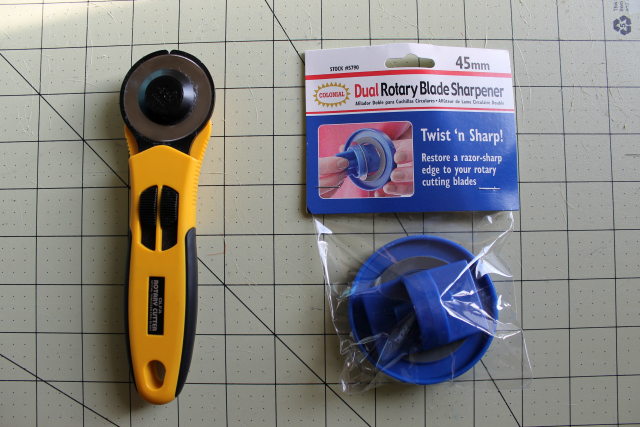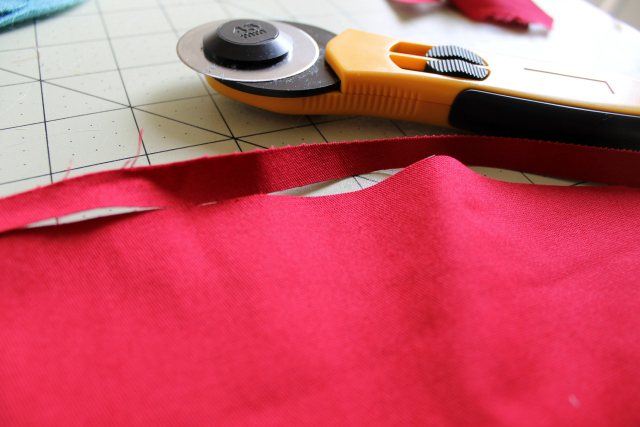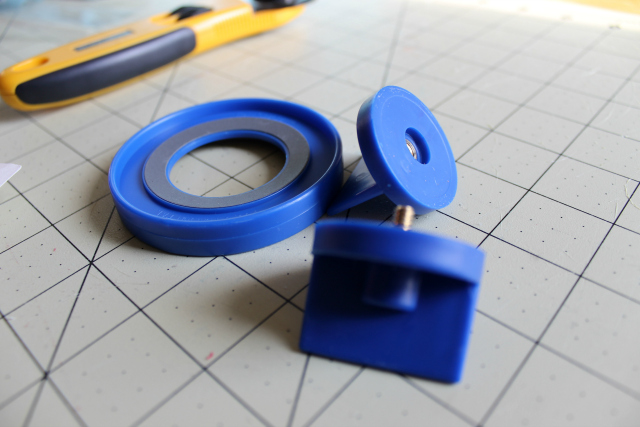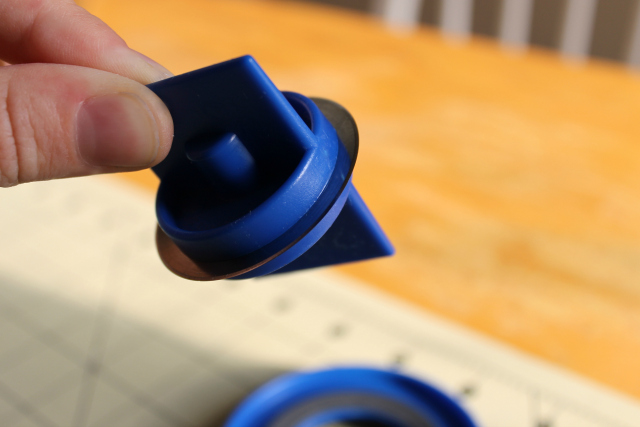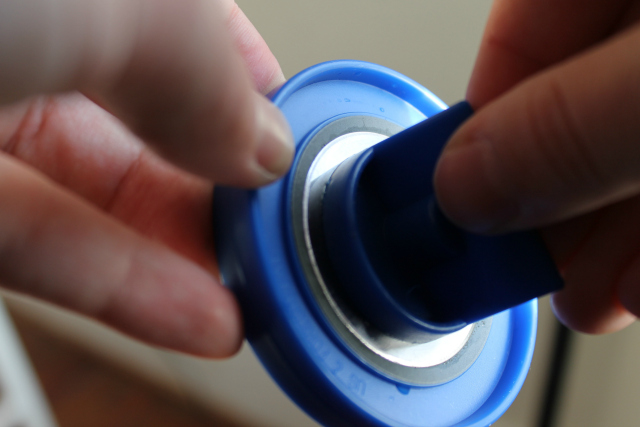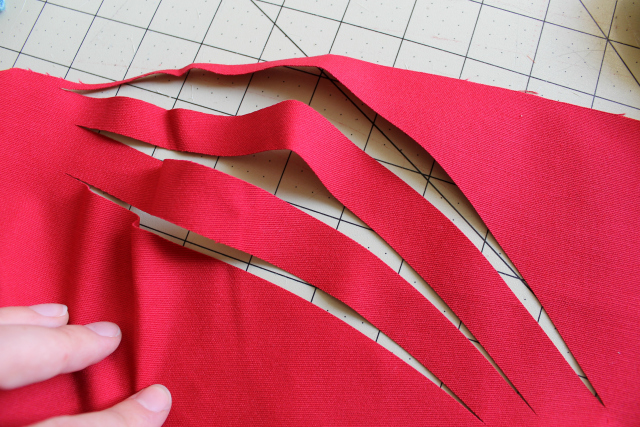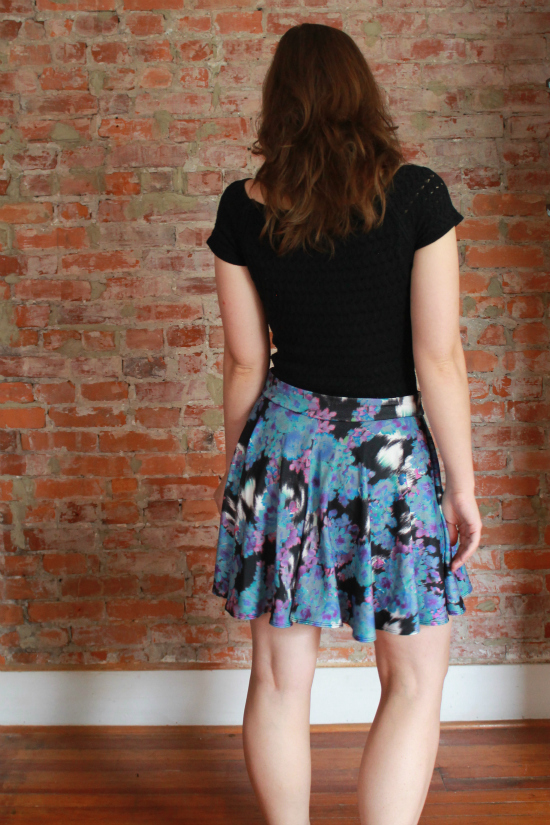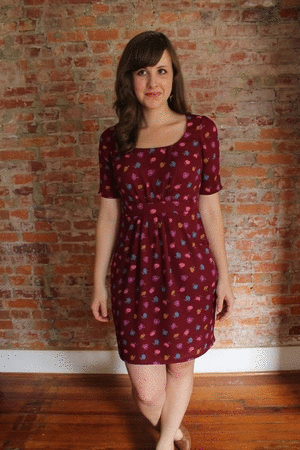Sure, I'll wear heels with a circle skirt, if the occasion feels right. But I've never worn heels with shorts before.
UNTIL NOW.
Well, these ain't shorts really. They're culottes, sewn from the Tania Culottes pattern by Megan Nielsen. I researched (er, wikipedia'd) the origin/meaning of culottes, and the word used to refer to the knee-breeches worn by French aristocrats in the 16th century. Working class revolutionaries were called "sans-culottes" (literally, without culottes), which was used as a derogatory term, obvi. So basically that means I'm like royalty in these culottes, you guys. Except "culottes" now can mean "panties" in French. Great. Whatever. I can't keep up with fashion.
I haven't ordered a paper pattern via mail in ages, so the wait felt excruciating. I've become a PDF pattern junkie, looking for that quick fix. Newsflash: the Tania Culottes (and a couple other MN patterns) are now available as a PDF on her website (here), as of like yesterday. Smart thinkin', Megs.
Anyway, the pattern finally arrived and I sewed my first pair immediately. I was just so curious to see how they were constructed, after reading other bloggers mention the clever pleating system. To the untrained eye, it looks like there's a center front and back seam in a normal skirt, but it's actually a large box pleat in the front and back that is stitched several inches down the skirt then stops. A couple inches behind the pleat is the actual seat seam. All the draping of the large pleat and circle-cut legs creates the look of a skirt. Tunnel vision:

I decided to make my culottes in a knit fabric because... because! I just tend to have a higher proportion of stretchies in my stash and I liked this watercolor print. It's a stable jersey or somethin' from a local discount fabric store. The pattern calls for woven fabrics and an invisible side zipper. I eliminated the zipper, so I sewed both side seams, constructed the waistband all together then attached it as one to the waist of the culottes. I serged elastic to the seam allowance of the waist so it doesn't stretch out when I go to pull the waist over my not-so-tiny hips. So it's a bulky seam, oh well.

I finished the hem with my coverstitch machine (review of my machine is here), though it's really not necessary because these culotte legs are enormous circles and will never have to be stretched over any body part. Speaking of the legs being enormous circles, that means it's still VERY possible to flash your naughties if you lift up your leg to throw over a bicycle, for instance. The crotch seam is quite low, actually, so while these culottes help control some windy-day chaos, you're not entirely safe from a little oops moment. Just saying!
Sizing reference: For this pair I made a size S in the waist with a size L length. I should have gone down a size in the waist to accommodate the fabric's stretch, because this pair hangs lower on my waist than I think they're intended. Even at the "large" length with a saggy fit, these 'lottes are pretty short! I'm 5'7, btw.
On my first pair, I noticed the same issue that many others mentioned about making this pattern (i.e. Nette, Lladybird, Scruffy Badger): the back drooped far below the front, and took quite a bit of adjustment to even everything out. Of course, garments cut on the bias are prone to stretching out, but it seemed a little excessive. Plus, I noticed the back was drooping the very first time I held them up vertically, so it didn't seem like something that resulted from hanging or wearing.
So I did some investigation. The pattern is, in fact, drafted this way. It's not a perfect circle and the back is drafted to be 2" longer than the front and sides to accommodate your rear end. Megan did mention the slightly longer back in her description of the culottes when they were first released (here). But I guess 2" is a little generous in a non-fitted circle skirt/culotte. And 2" in addition to the natural stretching of the bias may lead to even more drooping. I decided to re-draft it so the hem is even to begin with.
I found the center point of the circle and measured everything from there. Please pardon my janky use of canned tomatoes and chilies as pattern weights. The side seam (which is the upper horizontal edge of the photo above) is about 20" long from center point to the size L length:
Sorry the measuring tape is upside down. Anyway, you'll see that as you move along the skirt to measure the bias, the hem is drafted to 22" long:
I wanted it to be the same all the way around, so I decided to stick with the longer length since my first culottes are pretty short. So I made the back 22" long all the way around, and made the front 22" long all the way around as well.
I used the altered pattern to make a second pair. And after 24 hours of hanging, the hem was still relatively even. No droopy pants! But, I must confess, now the center back is an eensy bit higher than the rest of the culottes because my badonk is in the way, so I guess I made the mistake of making the hem TOO even. Ah well, learning. If you were to adjust your pattern like I did, maybe keep a tiny bit of extra length in the back. But not a full 2 inches. Or do whatchu want. I'm not here to preach about pattern drafting.
This is my fancy version. It's still a knit, but a pretty thick one so the circley femininity is exaggerated. This is leftover fabric from a dress I made in May (seen in my MMM photos here). The fabric is spongy, hot and not very stretchy so I don't really like wearing it in the summer. It's a blue knit fabric that has black lace fused to its right side.
Word to the wise: If you're using a directional, striped or plaid fabric for these bad boys, remember that the front and back pleat seam is what the world will see in the center, so be sure to match your print there. I didn't think about it and had to manipulate the fabric after the fact.
Not truly symmetrical but the best I could do!
The Tania Culotte is a fun, unique pattern that is super quick to make. Though the garment doesn't offer all the the practicality and coverage I expected, I still enjoy wearing them and demonstrating my "culotte-reveal pose" (seen in second photo above) to unsuspecting friends.
How do you feel about wearing culottes in the year 2013? I must say I prefer these to knee breeches, the culottes of yore...

